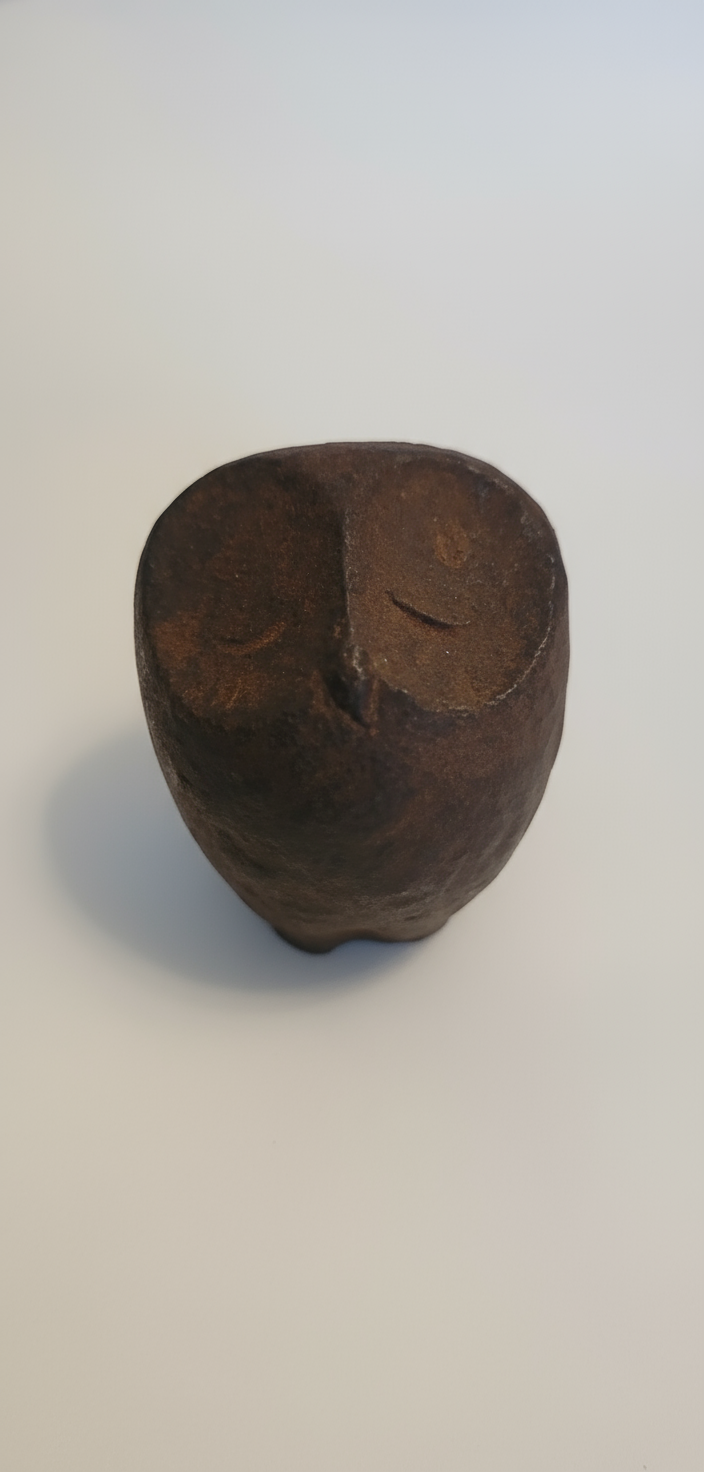
Cast Iron Owl (Unknown Artist)
Attributed to Jim Love or Charles Williams: Cast Iron Owl
Artist: Attributed to Jim Love (American, 1927–2005) or Charles Williams (American, 1909–1999) Title: Owl Medium: Cast Iron Period: Mid-Late 20th Century Provenance: Private Collection
The Story: A Mystery in Iron
This powerful Cast Iron Owl embodies the distinctive industrial artistry of the post-war Texas art scene and is strongly speculated to be the work of either Jim Love or Charles Williams, or possibly a collaborative piece between the two. The piece carries the stylistic hallmarks of both masters of metalwork.
The object's bold, unadorned material and compelling form align perfectly with the output of these two iconic figures:
Jim Love was known for transforming found and industrial materials into expressive, often humorous, sculptural figures, characterized by an economy of form and a conceptual wit.
Charles Williams was celebrated for his mastery of the cast iron medium, creating robust, expertly rendered objects and furniture that defined a unique subset of mid-century Texas modernism.
The "Owl" presents a fascinating curatorial puzzle, embodying the conceptual spirit of Love while demonstrating the technical precision typical of Williams's foundry work. It is a testament to the close-knit, yet stylistically diverse, group of artists working in Texas during this pivotal period.
The Object: Robust Form, Enduring Symbol
This Cast Iron Owl is a substantial work of sculpture that speaks directly to the qualities inherent in its medium:
Unmistakable Materiality: Rendered in heavy cast iron, the piece carries a powerful physical presence. The rugged texture and weight of the metal give the owl a permanent, grounded, and almost primitive quality.
Minimalist Design: The form of the owl is simplified and stylized, focusing on essential lines and the bird's symbolic power, aligning with the refined Brutalism often found in both artists' work.
Historical Context: Regardless of the exact creator, this piece is an important example of Texas Mid-Century sculpture, reflecting an era when artists used vernacular and industrial materials to create sophisticated, museum-quality pieces.
This rare object offers an exciting opportunity for collectors to acquire a piece with direct ties to two of Texas’s most influential 20th-century artists. It is a striking, contemplative work that invites ongoing discussion and connoisseurship.
Attributed to Jim Love or Charles Williams: Cast Iron Owl
Artist: Attributed to Jim Love (American, 1927–2005) or Charles Williams (American, 1909–1999) Title: Owl Medium: Cast Iron Period: Mid-Late 20th Century Provenance: Private Collection
The Story: A Mystery in Iron
This powerful Cast Iron Owl embodies the distinctive industrial artistry of the post-war Texas art scene and is strongly speculated to be the work of either Jim Love or Charles Williams, or possibly a collaborative piece between the two. The piece carries the stylistic hallmarks of both masters of metalwork.
The object's bold, unadorned material and compelling form align perfectly with the output of these two iconic figures:
Jim Love was known for transforming found and industrial materials into expressive, often humorous, sculptural figures, characterized by an economy of form and a conceptual wit.
Charles Williams was celebrated for his mastery of the cast iron medium, creating robust, expertly rendered objects and furniture that defined a unique subset of mid-century Texas modernism.
The "Owl" presents a fascinating curatorial puzzle, embodying the conceptual spirit of Love while demonstrating the technical precision typical of Williams's foundry work. It is a testament to the close-knit, yet stylistically diverse, group of artists working in Texas during this pivotal period.
The Object: Robust Form, Enduring Symbol
This Cast Iron Owl is a substantial work of sculpture that speaks directly to the qualities inherent in its medium:
Unmistakable Materiality: Rendered in heavy cast iron, the piece carries a powerful physical presence. The rugged texture and weight of the metal give the owl a permanent, grounded, and almost primitive quality.
Minimalist Design: The form of the owl is simplified and stylized, focusing on essential lines and the bird's symbolic power, aligning with the refined Brutalism often found in both artists' work.
Historical Context: Regardless of the exact creator, this piece is an important example of Texas Mid-Century sculpture, reflecting an era when artists used vernacular and industrial materials to create sophisticated, museum-quality pieces.
This rare object offers an exciting opportunity for collectors to acquire a piece with direct ties to two of Texas’s most influential 20th-century artists. It is a striking, contemplative work that invites ongoing discussion and connoisseurship.
